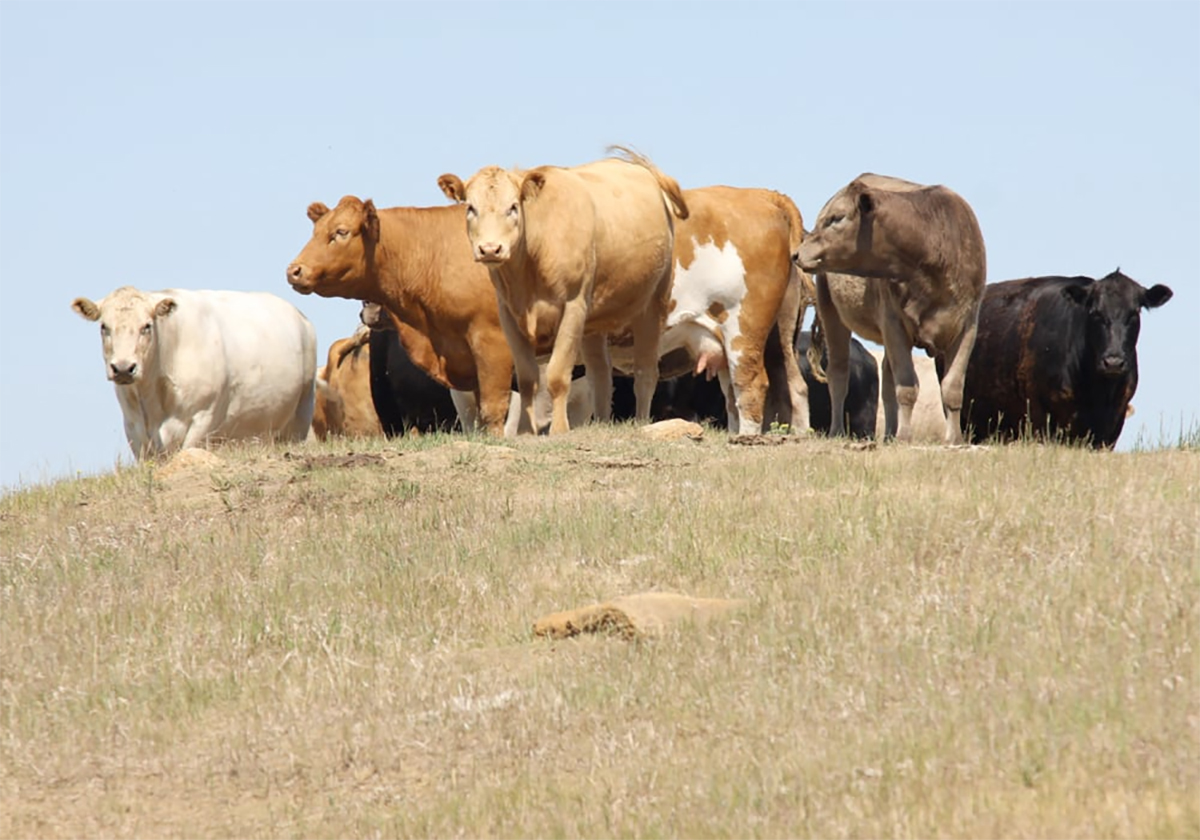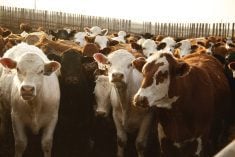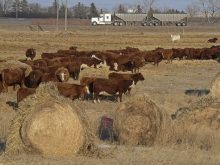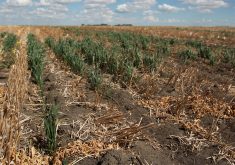MOOSE JAW, Sask. — Jeff Yorga’s ranch is now experiencing its ninth year of drought, and the president of the Saskatchewan Stock Growers Association said there are many others facing similar conditions.
The need for a good rain extends from the northern forest fringe across the province and down the west side.
“Unfortunately, this is a challenge that doesn’t seem to be going away,” Yorga said at last week’s SSGA annual meeting.
Read Also

Quebec pork company calls for transparency around gene-edited pigs
Quebec-based pork company duBreton is calling for transparency around meats from gene-edited pigs on concerns that a lack of mandatory labelling will confuse consumers, and dilute certification claims. The organic sector is also calling for labelling rules.
“Obviously it’s on producers’ minds all the time. The high price of cattle at the market makes it more likely that producers will be depopulating. Ultimately that’s not good for our business long term, but that’s the reality on the ground.”
Yorga downsized years ago, he said, and the idea of having even fewer cattle is a day-by-day discussion.
“I’m always hopeful that the weather will turn and feed opportunities will present themselves,” he said.
The availability of forage going forward could be an issue because only the southeast, including the Broadview, Estevan and Weyburn areas, appears to be in a good moisture situation.
SSGA past-president and new Canadian Cattle Association director Garner Deobald said his hay is heading out at less than 30 centimetres tall.
The Hodgeville producer said the season began at a moisture deficit, and although there was better snowfall last winter, much of it evaporated during a slow melt.
“Since then we’ve had a little bit of rain, but right now our crops are pretty much finished,” he said June 9.
”The grass had a decent start this spring. Pasture-wise we’ll be OK for a little while, but we do desperately need rain. It’s been a challenging year.”
Strong winds have added to that challenge.
Native grass is generally slower to grow, and rain would help it, Deobald said.
Yorga said a substantial rain is required if cattle producers are to be able to use their pastures and produce feed for the winter.
“Right now the hay stands are generally dead, not producing,” said Yorga, and many are questioning whether they will be able to cut any.
The Rural Municipality of Big Stick, headquartered in Golden Prairie in west-central Saskatchewan, has already declared a drought disaster.
Saskatchewan Cattle Association chair Chad Ross from Estevan said his area has been “blessed” with moisture.
However, much of that 75-millimetre rainfall did go to recharge.
He said producers in the north don’t usually see such dry conditions, and that is a concern. Some regions will see 30 to 40 per cent of a normal hay crop, he said.
In the most recent provincial crop report, hayland topsoil moisture was described as 72 per cent short or very short and pastures were 71 per cent short or very short. Conditions are better along the east side of the province and in some pockets in other regions.
With the exception of the southeast, most regions of the province have had rainfall of 100 millimetres or less.
Provincial agriculture minister Daryl Harrison said crop insurance offices are already fielding calls from producers, and he is concerned about cattle producers who have had to downsize.
“I was very optimistic coming out of winter. We virtually had snow cover to varying degrees across the province. I’d really hoped the drought had turned the corner,” he said.
He discussed the matter with federal agriculture minister Heath MacDonald during his visit to Saskatchewan last weekend.
The Agricultural Producers Association of Saskatchewan has asked the province to trigger the AgriRecovery framework for drought conditions, but a decision has not yet been made.
Producers have received per head payments through the framework in recent drought years.
Drought conditions also persist in parts of Alberta.
Medicine Hat producer Craig Lehr last week said cattle would be turned out into cereal crops soon.
In the most recent Alberta crop report, pasture conditions were listed as fair and tame hay growth conditions had declined, with about 40 per cent rated good to excellent.
In Manitoba, expectations are for a lower hay crop yield than average. Pastures were doing well but there are areas that are drier than usual.
















